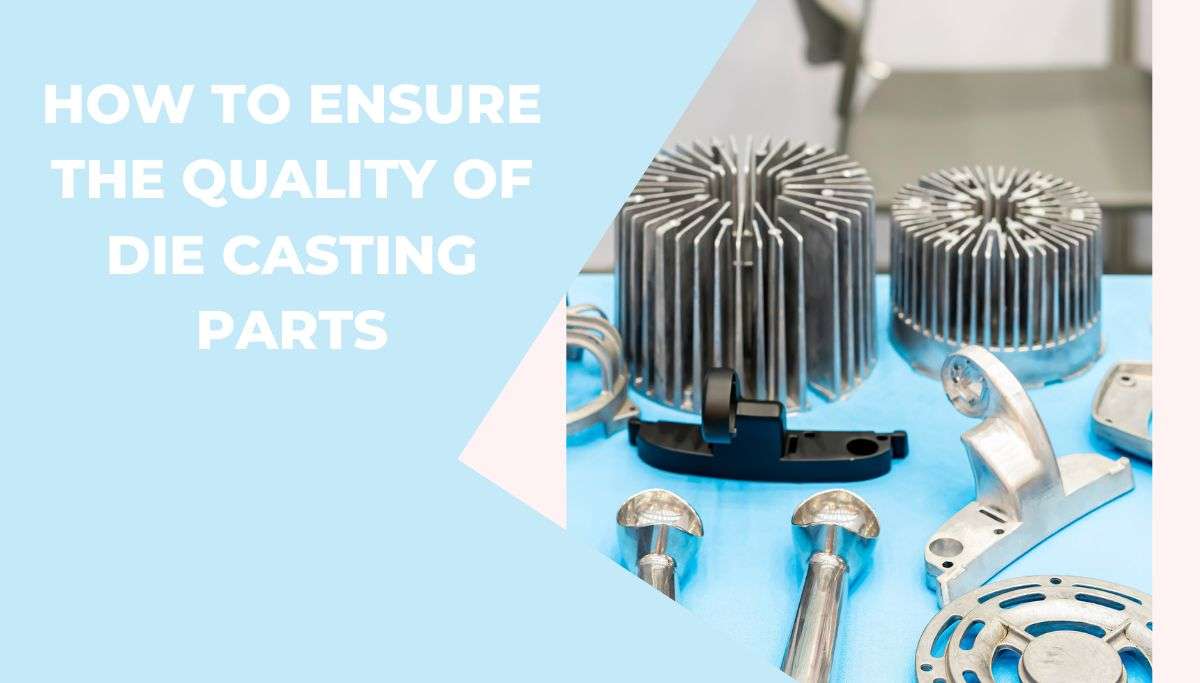
Feb 22,2024
Die casting is a significant manufacturing method in consumer goods, electronics, automotive, and aerospace industries. Die casting part quality is crucial since it affects the final product's functionality and safety. In this blog post, we understand the challenges of die-casting and the steps you can take to guarantee the best quality for custom die-casting parts.
In a manufacturing method called die casting, molten metal is injected under intense pressure into a mold cavity. This process yields complex, near-net-shape parts with excellent dimensional accuracy.
Die casting's versatility makes it a popular choice for producing custom parts, but maintaining high quality is essential to meeting industry standards and customer expectations.
The choice of material is crucial in die casting. Common materials include aluminum, zinc, and magnesium, each with properties and applications. Selecting a suitable material is a fundamental step in ensuring the quality of your custom die-casting parts.
Precise temperature and pressure control during the die-casting process are imperative. Fluctuations in these parameters can lead to defects in the parts, affecting their quality and structural integrity.
The quality of the mold used for die casting is a critical factor. Proper design and regular maintenance are mandatory to prevent defects and ensure the mold's longevity.
The quality of the base material, including its composition and purity, significantly influences the quality of the final product. Premium materials are a die-casting requirement that cannot be compromised.
Throughout the die-casting process, inspecting the pieces allows us to spot problems early on and make quick fixes. This proactive approach minimizes the likelihood of defects.
Methods like X-ray and ultrasonic testing examine the internal structure of die-casting parts without causing damage. These tests reveal hidden defects that might compromise the quality.
Choosing a reliable die-casting company with a proven track record is essential when sourcing custom die-casting parts. A company's experience and reputation indicate its commitment to quality.
Reputable die-casting manufacturers often hold industry-specific certifications. These certifications demonstrate their adherence to stringent quality control processes.
Selecting the suitable material for your custom die-casting parts is more than just a decision—it's a strategic choice that can make or break the performance of your final product. The material's properties should align perfectly with the intended application and performance requirements to ensure optimal functionality and longevity.
Factors like strength, corrosion resistance, and cost-effectiveness should guide your decision-making when selecting materials. A well-informed choice enhances the final product's quality and ensures it performs admirably in real-world scenarios, meeting or exceeding expectations.
Surface treatments are essential for improving die-casting items' appearance and functioning. By undergoing proper surface treatments, parts boast superior aesthetics and gain an added layer of protection against environmental factors and wear and tear.
An array of options exists to achieve desired finishes and bolster the quality of die-casting parts. From anodizing to powder coating and plating, each coating or finish brings unique benefits, allowing manufacturers to tailor the appearance and performance of their parts to suit specific applications.
Designing for die casting requires careful consideration of various factors. Features like draft angles, fillets, and uniform wall thickness can significantly optimize the quality of parts, ensuring smoother production processes and superior results.
Avoiding design pitfalls is crucial for maintaining the integrity and quality of die-casting parts. Some design errors that might cause defects and lower the final product's quality are sharp corners and inadequate draft angles.
Heat treatment processes enhance die-casting parts' mechanical properties and durability. It is crucial to know when and how to apply heat treatment to maximize the longevity and performance of parts in various applications.
CNC machining is a valuable tool for refining die-casting parts, allowing manufacturers to achieve tight tolerances and precise features necessary to meet specific design requirements. This post-casting process ensures that parts are finely tuned to perfection.
Implementing comprehensive quality testing protocols, including visual inspection, dimensional checks, and material analysis, ensures that each die-casting part meets the specified requirements. These rigorous testing methods leave no stone unturned in the pursuit of excellence.